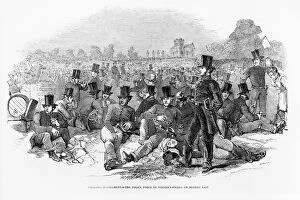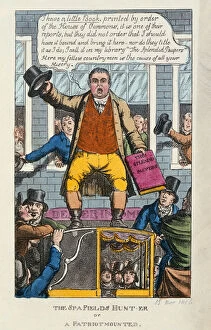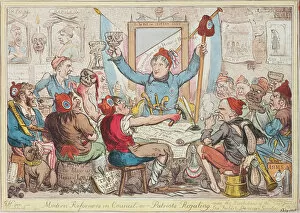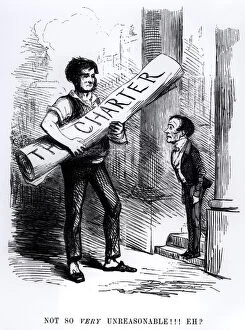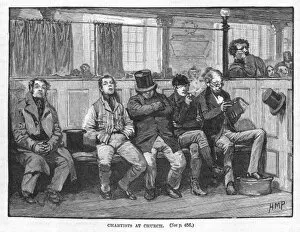Chartists Collection (page 2)
The Chartist movement, also known as Chartism, was a significant political and social movement that emerged in the mid-19th century in Britain
All Professionally Made to Order for Quick Shipping
The Chartist movement, also known as Chartism, was a significant political and social movement that emerged in the mid-19th century in Britain. It aimed to address the grievances of working-class people who were suffering from economic hardships and lacked political representation. One of the most iconic images associated with Chartism is "The Six Points of the Peoples Charter. " This lithograph depicted six demands: universal suffrage for all men over 21, secret ballots, equal electoral districts, no property qualification for Members of Parliament (MPs), payment for MPs to enable workers to serve in parliament, and annual parliamentary elections. Cartoons played a crucial role in spreading awareness about Chartism. These satirical illustrations often portrayed politicians and aristocrats as corrupt or indifferent towards the plight of ordinary people. One such cartoon showed a group of wealthy individuals mocking female Chartists who were advocating for their rights. In 1843, a Chartist party was formed to unite supporters across different regions. The party's aim was to challenge traditional politics by promoting working-class interests through peaceful means like petitions and demonstrations. Speaking of demonstrations, one notable event was "The Great Chartist Demonstration, " where thousands gathered to demand political reform. The procession during this demonstration showcased the strength and determination from various backgrounds. However, not all protests remained peaceful. An infamous incident occurred at Newport's Westgate Hotel in 1839 when armed protesters clashed with authorities resulting in casualties on both sides. This attack highlighted the frustrations felt by many Chartists who believed that violence might be necessary to achieve their goals. Despite setbacks like these violent clashes, many chartist leaders continued their struggle peacefully. The Shears Inn became an important meeting place where discussions took place regarding strategies and tactics employed by the movement. Chartist conventions were held regularly throughout Britain as a platform for activists to voice their concerns collectively. These gatherings allowed them to exchange ideas while strengthening solidarity among members fighting for a common cause.


